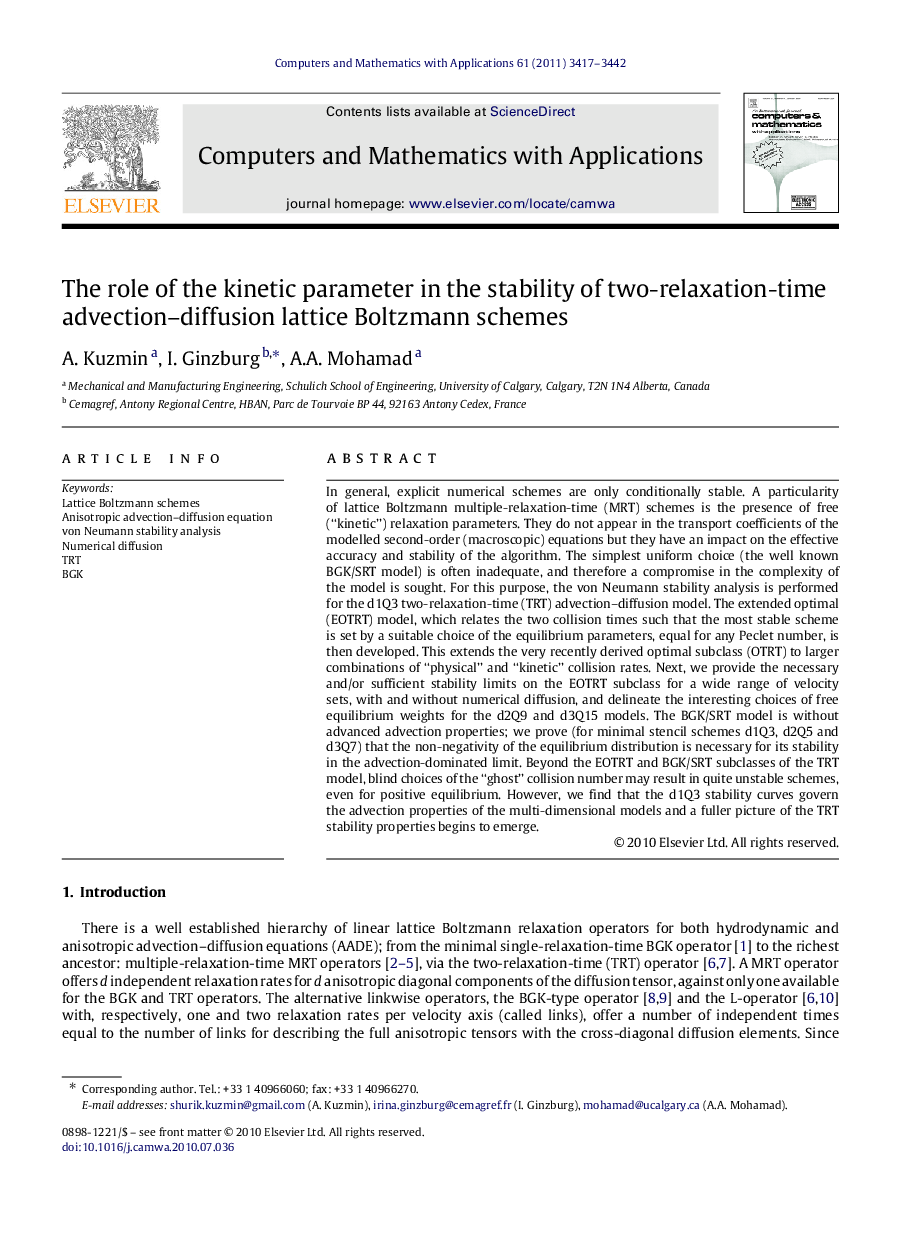| کد مقاله | کد نشریه | سال انتشار | مقاله انگلیسی | نسخه تمام متن |
|---|---|---|---|---|
| 472774 | 698747 | 2011 | 26 صفحه PDF | دانلود رایگان |

In general, explicit numerical schemes are only conditionally stable. A particularity of lattice Boltzmann multiple-relaxation-time (MRT) schemes is the presence of free (“kinetic”) relaxation parameters. They do not appear in the transport coefficients of the modelled second-order (macroscopic) equations but they have an impact on the effective accuracy and stability of the algorithm. The simplest uniform choice (the well known BGK/SRT model) is often inadequate, and therefore a compromise in the complexity of the model is sought. For this purpose, the von Neumann stability analysis is performed for the d1Q3 two-relaxation-time (TRT) advection–diffusion model. The extended optimal (EOTRT) model, which relates the two collision times such that the most stable scheme is set by a suitable choice of the equilibrium parameters, equal for any Peclet number, is then developed. This extends the very recently derived optimal subclass (OTRT) to larger combinations of “physical” and “kinetic” collision rates. Next, we provide the necessary and/or sufficient stability limits on the EOTRT subclass for a wide range of velocity sets, with and without numerical diffusion, and delineate the interesting choices of free equilibrium weights for the d2Q9 and d3Q15 models. The BGK/SRT model is without advanced advection properties; we prove (for minimal stencil schemes d1Q3, d2Q5 and d3Q7) that the non-negativity of the equilibrium distribution is necessary for its stability in the advection-dominated limit. Beyond the EOTRT and BGK/SRT subclasses of the TRT model, blind choices of the “ghost” collision number may result in quite unstable schemes, even for positive equilibrium. However, we find that the d1Q3 stability curves govern the advection properties of the multi-dimensional models and a fuller picture of the TRT stability properties begins to emerge.
Journal: Computers & Mathematics with Applications - Volume 61, Issue 12, June 2011, Pages 3417–3442